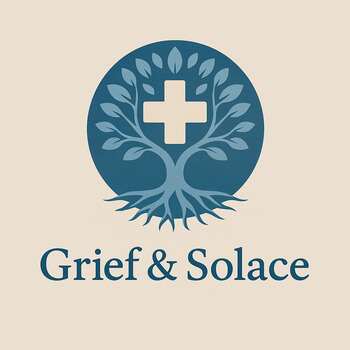Grieving TMJ Disorder: Mourning the Simple Act of Speaking Without Pain
Grief with TMJ is constant tension, aching through every word, every meal, and every smile that comes with a cost.

This post blends real grief with grounded knowledge. It isn’t clinical. It isn’t distant. It’s meant to sit beside you—not above you. The story you’ll read is meant to reflect what so many feel when living through or witnessing this condition: confusion, exhaustion, and quiet forms of courage.
If what you read feels familiar, please speak with your doctor. Your pain deserves more than silence.
Even Her Laughter Started to Hurt
It began with a click…a soft pop at the hinge of her jaw when she yawned or bit into something too tough. At first, it was annoying, but not alarming. Until the click turned sharp. Until her mouth stopped opening all the way. Until even smiling felt like pulling a muscle.
She didn’t know the name at first…just sensed that something was wrong. Headaches crept in by noon, and jaw tension bloomed into ear pain. A pressure behind her eyes felt like rage with no source, building silently day by day.
Finally, they told her it was TMJ disorder. The joint that let her speak, chew, sing, and smile…now swollen, misaligned, grinding her daily life into a tight, quiet ache.
People didn’t get it. “Oh, I get jaw tension too,” they’d say. “You’re probably just stressed.” “Try chewing on the other side.” They said it like her pain was just a suggestion, like her face hadn’t become its own prison.
🧠 Symptoms:
– Pain or tenderness in the jaw
– Aching pain around the temporomandibular joints (front of ears)
– Discomfort or pain when chewing, with difficulty opening or closing the mouth
– Clicking, popping, or grinding sounds during jaw movement
– Jaw locking or limited mobility
– Facial pain, headaches, or tooth pain without dental cause
– Symptoms worsen with stress, gum chewing, or jaw clenching
She stopped laughing. At first, to avoid the jolt. Then, because laughter became a trigger. Then, because it just didn’t come anymore.
The worst part wasn’t the pain—it was the invisibility. No cast. No bruises. Just her, gritting through every conversation, masking the fatigue with a forced smile that cost her more than she ever let on.
She tried mouth guards, muscle relaxers, and physical therapy. Ice packs are tucked into her pillow at night like secret medicine. Sometimes, it helped. Sometimes, it didn’t. But through it all, she kept showing up, to work, to friendships, to dinners where she cut her food into tiny, careful bites.
She learned to protect her peace…to stretch gently in the morning, to stop clenching when she was angry, to speak softly and on purpose. And eventually…she laughed again… Just a little… Just enough… And it didn’t hurt.
Complications:
– Chronic facial pain
– Limited jaw mobility
– Headaches and referred neck/shoulder pain
– Difficulty eating, speaking, socializing
– Sleep disruption from pain or bruxism
– Long-term joint degeneration
Causes:
– Often multifactorial; difficult to pinpoint a single cause
– Bruxism (teeth grinding or jaw clenching)
– Jaw injury or trauma
– Arthritis (osteoarthritis, rheumatoid)
– Disk displacement within the joint
– Stress-related habits (nail biting, jaw tension)
– Connective tissue disorders
– Coexisting chronic pain syndromes like fibromyalgia or PTSD
Risk Factors:
– Repetitive jaw stress (bruxism, gum chewing)
– Preexisting arthritis
– Jaw trauma/injury
– Anxiety, depression, chronic stress
– Female sex (more common in women)
– Autoimmune or connective tissue disease
– Sleep disturbances (e.g., sleep apnea)
Her pain didn’t leave a mark…but it carved her from the inside. And still, she found new ways to smile without flinching.
📘 Diagnosis & Treatment
Diagnosis
– Physical exam: palpate jaw and facial muscles, observe movement, listen for joint noises
– Imaging: X-ray, CT, or MRI to assess joint and disk position
– TMJ arthroscopy for complex cases (diagnostic/therapeutic)
Treatment
Conservative Approaches
– Self-care: soft foods, heat or ice packs, good posture
– Physical therapy: stretching, ultrasound, TENS
– Stress management: biofeedback, relaxation, counseling
– Oral appliances: night guards or splints to prevent grinding and reposition the jaw
– Medications: NSAIDs, muscle relaxants, low-dose antidepressants for pain and tension
Minimally Invasive Procedures
– Arthrocentesis: joint flushing with fluid to reduce inflammation
– Injections: corticosteroids or Botox in jaw muscles
Surgical Options (Last Resort)
– TMJ arthroscopy
– Modified condylotomy (structural jaw adjustment)
– Open-joint surgery for severe joint degeneration
Lifestyle & Home Remedies
– Avoid hard, chewy foods; limit wide jaw movements
– Chew evenly on both sides
– Practice jaw relaxation and stretching techniques
– Maintain neutral tongue posture (resting tongue on palate)
Alternative Medicine
– Acupuncture for muscle tension and pain relief
– Biofeedback to control muscle tension
– Relaxation training to reduce clenching
Living With It
TMJ is the pain that doesn’t just sit in your jaw—it echoes through your head and neck. It hides in the temples, tightens your neck, and steals the joy from a laugh or a meal. It’s the silent companion of stress and tension, invisible to others—felt in the hesitation before yawning, the flinch when chewing, the shortening of your smile.
The grief of TMJ isn’t always acknowledged. To others, it’s minor—yet to you, it’s major day-to-day. It wears you down, not with severity, but with persistent repetition.
But healing is possible. Through posture, breath, gentle therapies, and self-awareness, you can soften the pain. Naming what hurts makes space for relief. You don’t have to suffer silently, and you don’t have to suffer forever. Small rituals of care and patience reclaim your voice, your smile, your peace.
I know this is heavy, and I understand that the road ahead may feel like a tangle of loss and unanswered questions. But please hear this: you are not broken because you are hurting; you are not weak because you are afraid. You are living through something real, and survival itself is a kind of grace. You are allowed to struggle, you are allowed to hope, and you are allowed to not have all the answers today. Whatever comes next, you do not face it empty-handed; you carry every moment of love that shaped you, and that will always be enough to keep going.
🎀 Gifts to help With Temporomandibular Joint (TMJ)
🏥 Everyday Comforts for Everyday Battles
Managing Temporomandibular Joint (TMJ) often means needing a little extra help.
Sometimes it’s about restoring dignity, ease, or simply getting through the day with less pain.
These carefully chosen tools aren’t just items; they’re small bridges back to living.
This section is about finding practical support, never shame.
Orthopedic Jaw Ice + Heat Wrap – Relief for a Joint That Never Stops Moving
TMJ pain doesn’t stay quiet—it flares when you talk, eat, or even clench in your sleep. This dual-temperature wrap contours around the jaw, offering targeted cold for inflammation or warmth for tension release. Adjustable, lightweight, and wearable at rest. Because sometimes, even silence hurts—and this helps calm the bite.
🌿 Paths to Healing Beyond the Map
Sometimes traditional medicine isn’t enough.
If you’re exploring gentle, alternative options to help with Temporomandibular Joint (TMJ),
you might find comfort in plant-based compounds like **CBD or CBG**.
*This section is not medical advice, just a door left open.*
USA Medical Pain Relief Total Pack – Support for the Pressure That Radiates Across the Whole Face
TMJ disorder doesn’t stop at the joint—it triggers tension headaches, neck stiffness, and chronic stress. This Total Pack blends CBD, anti-inflammatory support, and nervous system calm to help manage pain patterns and reduce flare-ups. It won’t realign your jaw. But it may help it stop screaming.
Need a Different Path Forward?
Every journey through grief looks different. Choose the next step that speaks to where you are now:
When You're Ready to Start Healing
Healing doesn’t mean forgetting.
It means finding small ways to carry your grief with strength and grace.
These are the stories, tools, and gentle steps to begin walking forward…at your own pace.
When You're Still in the Thick of It
Sometimes healing feels like a lie.
If you’re not ready to move on…if the pain still roars louder than the world wants to hear…this is the place where you’re allowed to feel it.
No sugarcoating. No pretending. Just truth.
When You're Holding on to Who’s Still Here
Grief reminds us to love louder.
If someone you love is still with you, this is your place to celebrate them, honor them, and create new memories while there’s still time.
Joy and sorrow can live side by side.






